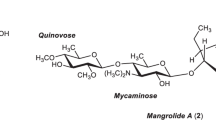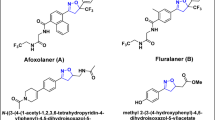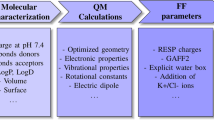Abstract
THE antibacterial effect of numerous bioflavonoids is not yet known, and on the basis of chemical structure it seemed worth while to investigate the possible antibacterial effect of fisetin, dihydrofisetin and fisetinidin chloride. Fisetin and dihydrofisetin are commercial products, but we have synthesized fisetinidin chloride. Fisetin is found in Butea frondosa, Gleditschia triacanthos, Quebracho Colorado and the genus Rhus1,2.
This is a preview of subscription content, access via your institution
Access options
Subscribe to this journal
Receive 51 print issues and online access
$199.00 per year
only $3.90 per issue
Buy this article
- Purchase on SpringerLink
- Instant access to full article PDF
Prices may be subject to local taxes which are calculated during checkout
Similar content being viewed by others
References
Konstanetzki, S. von, Lampe, V., and Tambor, J., Ber. Dtsch. Chem. Ges., 37, 784, 2096, 2803 (1904).
Oyamada, T., Liebigs Ann., 538, 44 (1939).
Oyamada, T., J. Chem. Soc. Japan, 55, 755, 785 (1934).
Author information
Authors and Affiliations
Rights and permissions
About this article
Cite this article
GÁBOR, M., EPERJESSY, E. Antibacterial Effect of Fisetin and Fisetinidin. Nature 212, 1273 (1966). https://doi.org/10.1038/2121273a0
Published:
Issue date:
DOI: https://doi.org/10.1038/2121273a0
This article is cited by
-
Protective Effects of Fisetin Against 6-OHDA-Induced Apoptosis by Activation of PI3K-Akt Signaling in Human Neuroblastoma SH-SY5Y Cells
Neurochemical Research (2018)
-
On the difference in decomposition of taxifolin and luteolin vs. fisetin and quercetin in aqueous media
Monatshefte für Chemie - Chemical Monthly (2016)
-
Synthetic sugar cassettes for the efficient production of flavonol glycosides in Escherichia coli
Microbial Cell Factories (2015)



